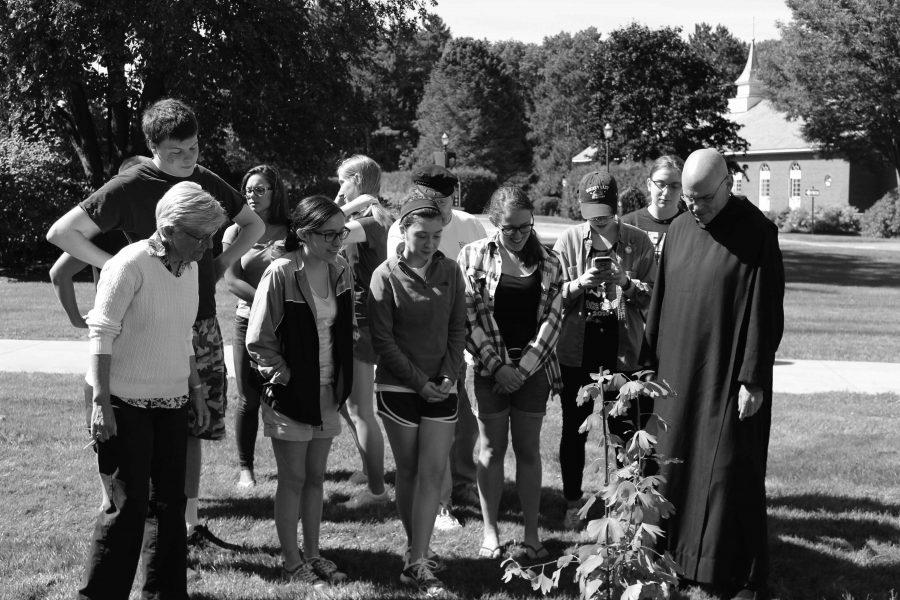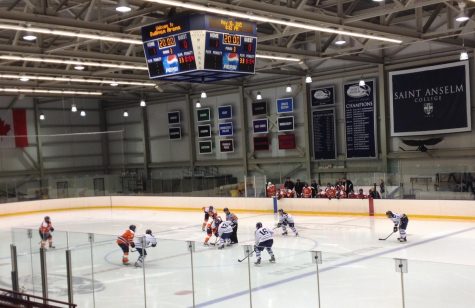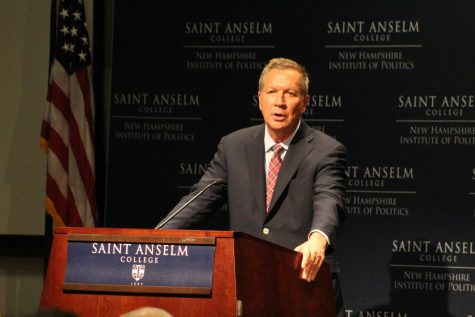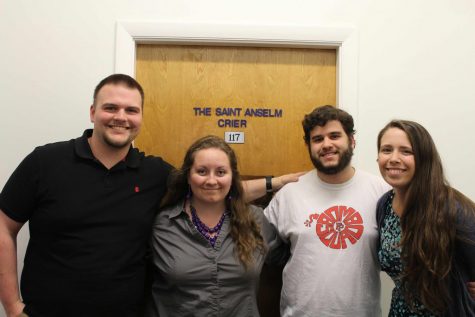A symbol of hope: Hiroshima ginkgo tree planted behind Joseph Hall
Crier\Tim Mannila
The Saint Anselm College community gathered on Saturday, Sept. 17 to celebrate the arrival of the Hiroshima survivor tree.
September 28, 2016
Behind Joseph Hall stands a three-year-old ginkgo tree. This tree, only about two feet in height, was grown from one of 170 trees that survived Ground Zero of the atomic bombing of Hiroshima, Japan, only 200 meters from the bomb’s epicenter.
Alumnus Michael McCue ’89, then the Town Administrator of Avon, MA, came across the ginkgo when he was looking for a new tree species for Avon’s Arbor Day observance. The ginkgo quickly became a prime candidate for McCue, as the tree can live for more than 200 years and survive a multitude of natural and, McCue learned, unnatural conditions.
McCue came to possess 12 ginkgo saplings grown from Hiroshima survivor trees by Green Legacy Hiroshima. This initiative of the United Nations spreads the seeds and saplings of these survivor trees across the world.
McCue, who studied history at Saint Anselm College, worked with Professor Beth Salerno and the college’s History department to bring the ginkgo to campus. The tree can survive over 200 years, and so will remain part of Saint Anselm College’s legacy as a symbol of hope for centuries to come.

The ginkgo planted behind Joseph Hall was brought to campus by Michael McCue ’89.
A small ceremony was held on Sept. 17 to “celebrate history and hope as embodied in this Hiroshima survivor tree.”
Professor Matthew Masur gave context to the tree’s planting, discussing the development of the atomic bomb, its use, and its meaning to Japan.
“The bomb gave an ominous warning of prompt and utter destruction to the Japanese,” said Masur. “Indeed, it was deadly, terribly deadly.”
Masur described the bomb’s immediate physical devastation as well as the lasting effects of the radiation poisoning that followed.
This caused Japan to reassess its imperial expansion and misguided policies. In 1946, the emperor of Japan renounced his divinity, which led to Japan’s new constitution. The constitution introduced three radically different initiatives: first, to grant rights to its citizens; second, to limit the power of the emperor; and third, to renounce war.
The ginkgo trees became symbols of hope in Japan, noted Salerno: “The next April, the cherry blossoms bloomed in the midst of bleakness.” As the cherry blossoms came back into fruit and flower, so flowered hope for a new Japan.
The ceremony closed with Salerno leading a prayer “that we all promote, preserve, and extend peace.”











